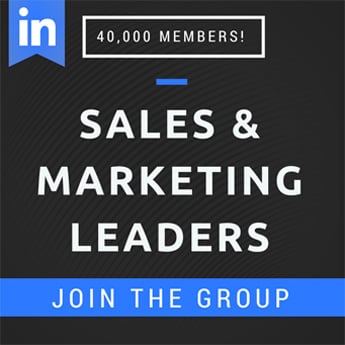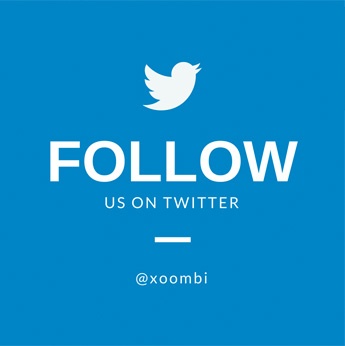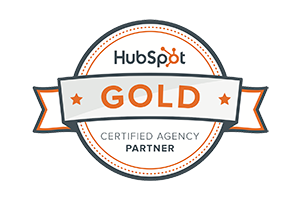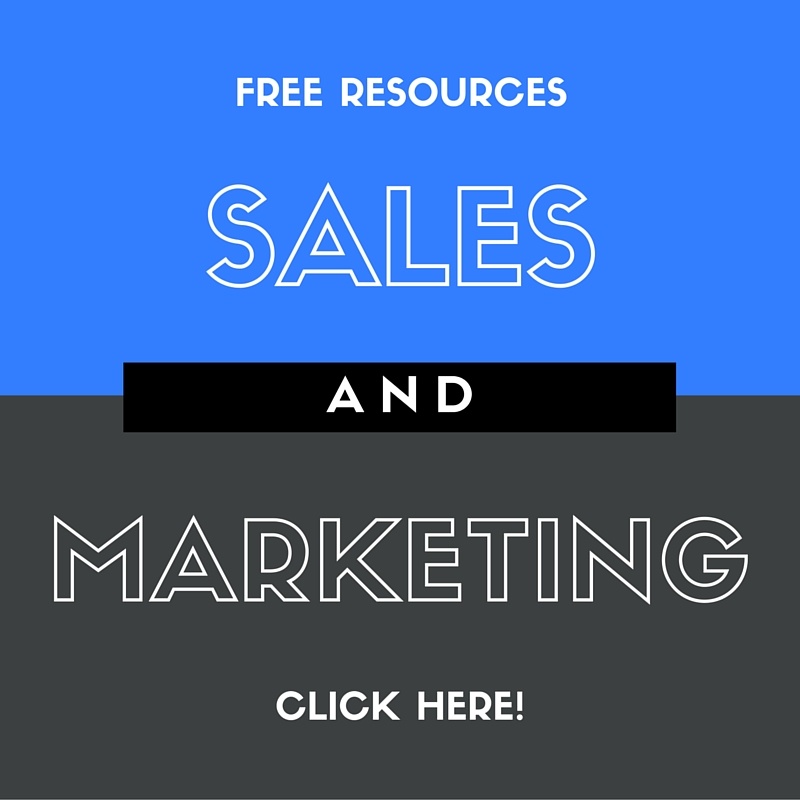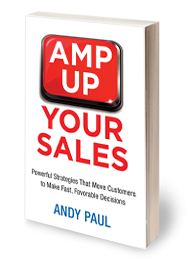 Sales and Marketing teams are looking for ways to speed up the sales process and shorten sales cycles. From lead generation to closing the sale, Andy Paul’s new book AMP UP YOUR SALES provides powerful sales acceleration strategies that move customers to make fast, favorable decisions. I got the chance to interview Andy this week and asked him to share his tips and ideas for accelerating sales...
Sales and Marketing teams are looking for ways to speed up the sales process and shorten sales cycles. From lead generation to closing the sale, Andy Paul’s new book AMP UP YOUR SALES provides powerful sales acceleration strategies that move customers to make fast, favorable decisions. I got the chance to interview Andy this week and asked him to share his tips and ideas for accelerating sales...
The first piece of advice you give in the book is to simplify your selling… what do you mean by that?
If you're a salesperson today your success will be based more on how you sell than what you sell. And the foundation for every salesperson’s “how” is built on the simple things like follow-up, responsiveness, trust, and value. All of these are aspects of your selling over which you have direct control. Therefore, it’s essential to master these simple strategies to simplify your selling:
-
Make every sales touch count. Make absolutely certain that each interaction you have with a prospect delivers the maximum value that will help them move one step closer to making a decision.
-
Be absolutely responsive. Every customer inquiry or request requires a complete response from you in the shortest time possible.
-
Clarify your offer. The customer must be able to quickly understand what they are buying from you that will satisfy their requirements. It they have to work too hard to understand what they are buying, they won’t.
You also talk about “The New Sales Funnel.” Tell us more about that…
Most salespeople still sell as if the Internet didn’t exist. They receive a sales lead or inquiry and start their conversation with the customer by engaging in what I call “top of the funnel” selling. What that means is that the salesperson kicks-off their first interaction with a potential prospect with “Let me tell you about my company,” or “Let me tell you about our products.” In essence, they’re acting like their company’s website. The problem with that is that the prospect already spent time on your website researching your company, products and services before they contacted you. At that point, if you’re not delivering any more value than what the lead discovered on your website, then you’re just wasting the prospect’s time.
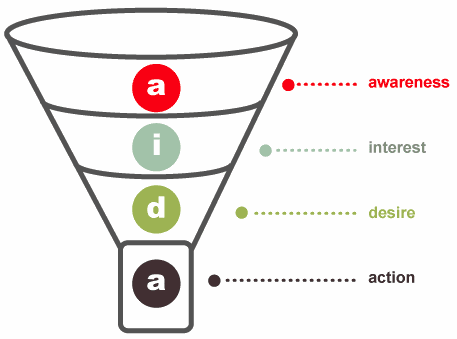
Research shows that customers typically are anywhere from 50-75% of the way through their buying process before they engage with a seller for the first time. They have used the Internet to work through the early stages of their buying process, so now when they reach out to talk with a salesperson, they are not entering the “sales funnel” through the wide opening at the top. Instead they are inserting themselves into the funnel at least halfway down. This is what I mean by the New Sales Funnel. By definition, the New Sales Funnel means that when you first engage with a new potential prospect that they have fewer questions remaining to be answered and that their timing is urgent.
Instead of defaulting to “top of the funnel” selling, you have to focus your initial sales touches on the customer by asking insightful questions and determining what information the customer still needs from you in order to make a good decision quickly.
You make some interesting points Andy, and what immediately comes to mind is that almost everyone I talk to says their product or service has a long sales cycle. If customers are more than halfway through the funnel, they have fewer questions, and their timing is urgent… wouldn’t the sales cycle be shorter? What do you think is happening with these companies who believe they have a long sales cycle?
There’s two points to address there. First, sales cycles could be shortened if sellers were to engage customers more effectively at the point of first contact. Companies that ask “What can we do to shorten our sales cycle?” are asking the wrong question. The right question is: ‘What steps can we take to help our customer compress their decision-making cycle?” Customer research increasingly is finding that customers want to make decisions more quickly. How can you, as a seller, help them achieve that goal? For example, one step sellers should take is to formally map out the information that their customer needs from them at each step of their buying process in order to move to the next step. And, then, make that information readily available to their sales team and train them on how to use that information to move the customers toward a decision.
To your second point, yes, there are some products and services that have long sales cycles. Could they be shorter? Of course. But there are instances where there may be formal bidding processes in place that constrain the ability of the customer to make faster decisions. In those cases the salesperson has to focus on what I call, in Chapter 9 of Amp Up Your Sales, “winning the sale before you win the order.” What this means is to focus on front-loading the value you deliver into the initial steps of the customer’s buying process and move them to the point where they consciously envisioning what it would be like to work with your product and company. At that point, you’ve won the sale. It doesn’t mean that you’ve won the order. But you definitely have the inside track and your competitors are fighting for second place.
You've developed some important concepts on perception of value. What is the Power of First Perception?
Your ability to win any order hinges in large measure on the customer’s initial perception of the value you’re able to deliver to help them quickly navigate through their buying process. And this perception is formed within the first few seconds of your initial interaction. The very first actions you take to shape the buyer’s perception of you—their primary point of contact for learning about the products and services you sell—will often spell the difference between winning and losing.
This perception, from what a customer senses about your actions, is an instantaneous and intuitive recognition of the value, or lack thereof, that the customer feels you bring to their buying process.
The key is to think about the impression you want to make in terms of what the customer wants. If most customers move a substantial way through their buying process on their own, without the help of a salesperson, what do they want to happen when they do? They want someone to pick up the phone and call them right now. Responsiveness is your key to making a good first impression and creating a positive first perception.
And then you build on those ideas by teaching us how to maximize value. Share your thoughts on the definition of value in selling.
At the heart of every sales interaction is a bargain struck between the customer and you, the seller. The customer agrees to invest some of their limited time in you. And, in return, they have the very reasonable expectation that they will receive something of value from you. It’s simpler than you think...

Value is information (data, knowledge, questions, context and insights in any form) that helps the customer move at least one step closer to making a decision. And a salesperson should never interact with a prospect unless they have a plan to deliver something of value to them. After all, the customer doesn’t have time to waste on a salesperson that can’t provide a positive return on the time they have invested in them.
The salesperson then needs to make certain that they have a plan for every sales touch to deliver the maximum value to the prospect with the least investment of their time. This plan needs two things: a goal that is defined in terms of the value that they will deliver and an outcome defined in terms of the next steps the prospect will take as a result of receiving the value.
There’s a lot of debate out there about prospecting and cold calling. Where do you stand?
I’m not sure why there is a debate about this. As I say in Amp Up Your Sales, whether you like to prospect or not, in almost all cases it is unavoidable; and you just have to do it.
In an ideal world, marketing would generate enough leads that the need for cold calling would not exist. But that is unlikely to happen. So, if a salesperson doesn’t receive enough inbound sales leads then they necessarily will need to prospect to make up the difference. The difference between the number of leads they receive and the number of prospects they need to in order to meet quota is what I call the Lead Deficit. Every salesperson should know what their Lead Deficit is and have in place a prospecting plan to eliminate it and make their quota.
When creating a sales action plan a salesperson first needs to calculate what their Lead Deficit will be. (Managers can reach out to me at sales@andypaul.com if they would like a guide for how to calculate this.) If you need 100 leads in a year to generate enough prospect and orders to meet quota, and you project that you will only receive 40 of those leads from marketing, the your Lead Deficit is 60 and you’ll need a disciplined, effective prospecting plan to develop those additional 60 prospects.
Follow-up is so important to sales success... talk about your ideas around the No-Lead-Left-Behind Sales Process.
The No-Lead-Left-Behind process is tied to two crucial facts. First, is research showing that about 73% of sales leads are never followed up. Which is inexcusable. The second is that the fastest and easiest way to grow your sales is to follow-up on 100% of your sales leads.
I am always mystified about why sales reps so readily ignore sales leads. Sales leads today are not the same as they were 20 or 30 years ago before the Internet. At that time a customer virtually had only one source of information about the products and services you were selling. And that was you, the sales rep. In that event, if a company was interested in information about your products, even if they were just mildly curious, they had to talk to a sales rep. Naturally, in those circumstances, a high fraction of sales leads were just “shoppers” who never going to be buyers.
But, today, those “shoppers” are weeded out by your website. Those leads who actually reach out and contact you are valid leads that need to be followed up. They may not turn into qualified prospects. But they are valid leads that deserve to be followed up. They’ve already gone through at least 50% of their buying process before they contacted you. So, if you don’t follow up with them, you are going to miss an opportunity and the will buy from your competition.
Want a quick recipe for increasing your sales? Adopt a No-Lead-Left-Behind process.
You emphasize mastering stories that sell. How do you build compelling sales stories?
Salespeople are usually more comfortable talking about facts and features than communicating value to a prospect. However, telling a simple sales story is a fast and easy way to establish a deeper connection with a prospect. Stories enable your prospect to experience your product through the eyes of one of your current customers and they provide crucial insights into the value the prospect will receive from their investment in your product or service. Stories are the best to let prospects take a mental test drive of your product, which is an essential step in their decision-making process.
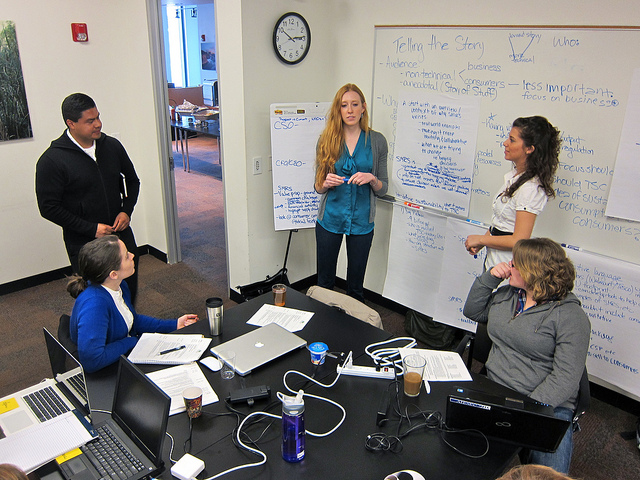
Well crafted and polished sales stories create an indelible impact on a customer and are an essential sales tool to differentiate you and your offering in the mind of your customer.
Start crafting your effective sales story by answering these four simple questions:
-
What problem was your customer trying to solve?
-
Why was your expertise relevant to your customer?
-
Why did the customer order from you?
-
What value has the customer received from your product/service?
Each story must be no more than 2 minutes in length. There are two reasons for this time limit. First, if the stories are any longer they will become too complex and difficult to remember. Which means that you and salespeople won't use them. Secondly, if your story drags on for longer than 2 minutes your prospect will stop hearing your words and start hearing "blah, blah, blah." Blah is not how you want the prospect to remember you, your product, and your company.
When people read the book… what are the key takeaways you want them to walk away with and be able to execute?
The key takeaways are embodied in the AMP in the title. It is really an acronym (AMP). It is a simple mnemonic device I created, that all salespeople can use to ensure that every step of their sales process is focused on the tangible and intangible attributes that make a difference to their customers and their ability to make good decisions quickly.
A = Accelerate Your ResponsivenessResponsiveness in sales has two components: information and speed. To be responsive a seller has to provide complete information to a customer in a timely manner. One way to think of this is that every customer has a certain number of steps in their buying process. And each step has associated with it certain questions that need to be answered before the customer can move on to the next step. Being a responsive means to quickly provide the customer the information they need to move on to the next step.
M = Maximize the Value You Deliver in Each Sales InteractionA customer gives a seller some of their time. In reality they invest their time in the seller. The seller has to give the customer something of value in return for that investment. That value must be something (information, facts, insights) that moves the customer at least one step forward in their buying process. If the customer gives a seller some of their time and they receive nothing of value in return they will stop giving time to that seller.
P = Practice Simplicity in Your SellingThe difference between winning and losing in sales is a very thin margin. I ask sellers all the time: “What was your margin of victory in your last deal? 10% 50% 75%?” The fact is that no one knows and no seller can predict. They have to assume that their margin of victory, especially in this economy where the actual and perceived differences amongst products is virtually nil, will be only 1%. The question then becomes what can a seller do that will create 1% more value than their competitors? In these cases, winning a deal often comes down to the small things, the simple things that a seller can do to create differentiation. For instance, one simple way to stand out from the crowd of competitors is to be more responsive.
 Andy Paul is a leading sales acceleration expert, author, speaker and consultant. He is the author of the new Amazon best-seller Amp Up Your Sales: Powerful Strategies That Move Customers To Make Fast, Favorable Decisions (AMACOM Books, 2014), and the author of Zero-Time Selling: 10 Essential Steps to Accelerate Every Company's Sales, which was recognized as one of the Top 3 Sales & Marketing books of 2011. He was recognized by Forbes as one of the leading global experts on social selling. He works out of offices in New York City and San Diego.
Andy Paul is a leading sales acceleration expert, author, speaker and consultant. He is the author of the new Amazon best-seller Amp Up Your Sales: Powerful Strategies That Move Customers To Make Fast, Favorable Decisions (AMACOM Books, 2014), and the author of Zero-Time Selling: 10 Essential Steps to Accelerate Every Company's Sales, which was recognized as one of the Top 3 Sales & Marketing books of 2011. He was recognized by Forbes as one of the leading global experts on social selling. He works out of offices in New York City and San Diego.
Email: andy@andypaul.com Website: www.andypaul.com
Phone: 619-980-4002 Twitter: @zerotimeselling; @AndyPaulSales
image sources:




